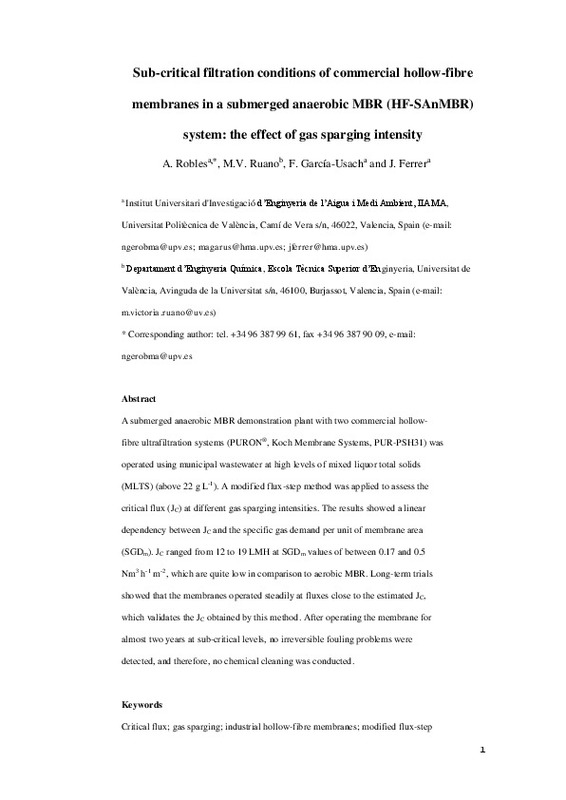Mollá Romano, S.; Compañ Moreno, V.; Giménez Torres, E.; Blazquez, A.; Urdanpilleta, I. (2011). Novel ultrathin composite membranes of Nafion/PVA for PEMFCs. International Journal of Hydrogen Energy. 36(16):9886-9895. https://doi.org/10.1016/j.ijhydene.2011.05.074
Por favor, use este identificador para citar o enlazar este ítem: http://hdl.handle.net/10251/64221
|
Título:
|
Novel ultrathin composite membranes of Nafion/PVA for PEMFCs
|
|
Autor:
|
Mollá Romano, Sergio

 Compañ Moreno, Vicente
Compañ Moreno, Vicente

 Giménez Torres, Enrique
Blazquez, Alberto
Urdanpilleta, Idoia
Giménez Torres, Enrique
Blazquez, Alberto
Urdanpilleta, Idoia
|
|
Entidad UPV:
|
Universitat Politècnica de València. Departamento de Termodinámica Aplicada - Departament de Termodinàmica Aplicada
Universitat Politècnica de València. Departamento de Ingeniería Mecánica y de Materiales - Departament d'Enginyeria Mecànica i de Materials
|
|
Fecha difusión:
|
|
|
Resumen:
|
The electrospinning approach is an easy and useful method to fabricate porous supports with tailored properties for the preparation of impregnated membranes with enhanced characteristics. Therein, this technique was used ...[+]
The electrospinning approach is an easy and useful method to fabricate porous supports with tailored properties for the preparation of impregnated membranes with enhanced characteristics. Therein, this technique was used to obtain polyvinyl alcohol (PVA) nanofiber mats in which Nafion (R) polymer was infiltrated. These Nafion/PVA membranes were characterized in their mechanical properties, proton conductivity and fuel cell performance. Conductivity of the composite membranes was below the showed by pristine Nafion (R) due to the non-ionic conducting behaviour of the PVA phase, although the incorporation of the PVA nanofibers strongly reinforced the mechanical properties of the membranes. Measurements carried out in a single cell fed with H-2/Air confirmed the high performance exhibited by a 19 mu m thick nanofiber reinforced membrane owing to its low ionic resistance. These reasons make ultrathin (<20 mu m) Nafion/PVA composite membranes promising candidates as low cost ion-exchange membranes for fuel cell applications.
[-]
|
|
Palabras clave:
|
Conductivity
,
Mechanical properties
,
Nanocomposite Nafion ® membranes
,
PEMFC performance
,
PVA nanofibers
,
Fuel cell application
,
Fuel cell performance
,
Ionic resistance
,
Low costs
,
Nanofiber mats
,
Nonionic
,
Porous support
,
Reinforced membranes
,
Single cells
,
Tailored properties
,
Ultra-thin
,
Ion exchange
,
Ion exchange membranes
,
Nanocomposites
,
Nanofibers
,
Proton exchange membrane fuel cells (PEMFC)
,
Composite membranes
|
|
Derechos de uso:
|
Cerrado |
|
Fuente:
|
International Journal of Hydrogen Energy. (issn:
0360-3199
)
|
|
DOI:
|
10.1016/j.ijhydene.2011.05.074
|
|
Editorial:
|
Elsevier
|
|
Versión del editor:
|
http://dx.doi.org/10.1016/j.ijhydene.2011.05.074
|
|
Código del Proyecto:
|
info:eu-repo/grantAgreement/GVA//IMIDIC%2F2009%2F155/ES/Materiales y componentes para pilas de combustible de membranas de intercambio protónico (PEMFC) y de metanol directo (DMFC)/
|
|
Agradecimientos:
|
This research is in the frame of IMIDIC/2009/155 project granted by Generalitat Valenciana through Institute for Small and Medium Industry (IMPIVA) and European Union by FEDER funds. The IMIDIC/2009/155 project belongs to ...[+]
This research is in the frame of IMIDIC/2009/155 project granted by Generalitat Valenciana through Institute for Small and Medium Industry (IMPIVA) and European Union by FEDER funds. The IMIDIC/2009/155 project belongs to the call for Technological Centres of IMPIVA Network.
[-]
|
|
Tipo:
|
Artículo
|






![[Cerrado]](/themes/UPV/images/candado.png)



